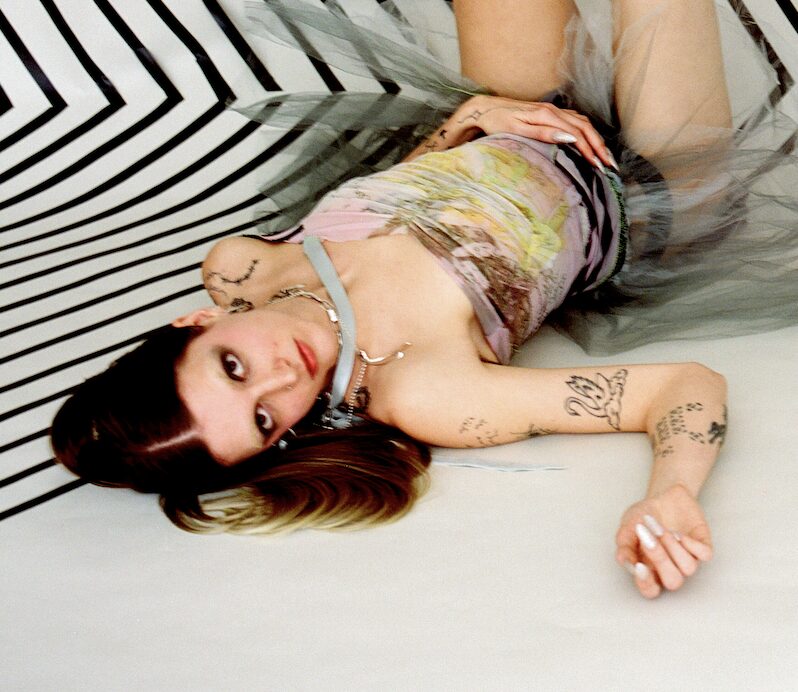Tell us a little bit about yourself and what you do.
My name is Madeline Hansen and I am a designer and artist based in Chicago, IL. With a background in printmaking, my practice involves incorporating text I have written and found imagery into one of one garments. I frequently explore concepts such as pain and pleasure, beauty and violence, and adoption of memory.
I believe that being a designer and an artist is not just something you practice but rather something you live. I source a lot of my ideas from my dreams, through meditation/prayer, and body movement. One of my favorite things to do is dance alone in my room for hours. Understanding the body, the mind, experience and environment whether past, present, or future is incredibly crucial to what I do.
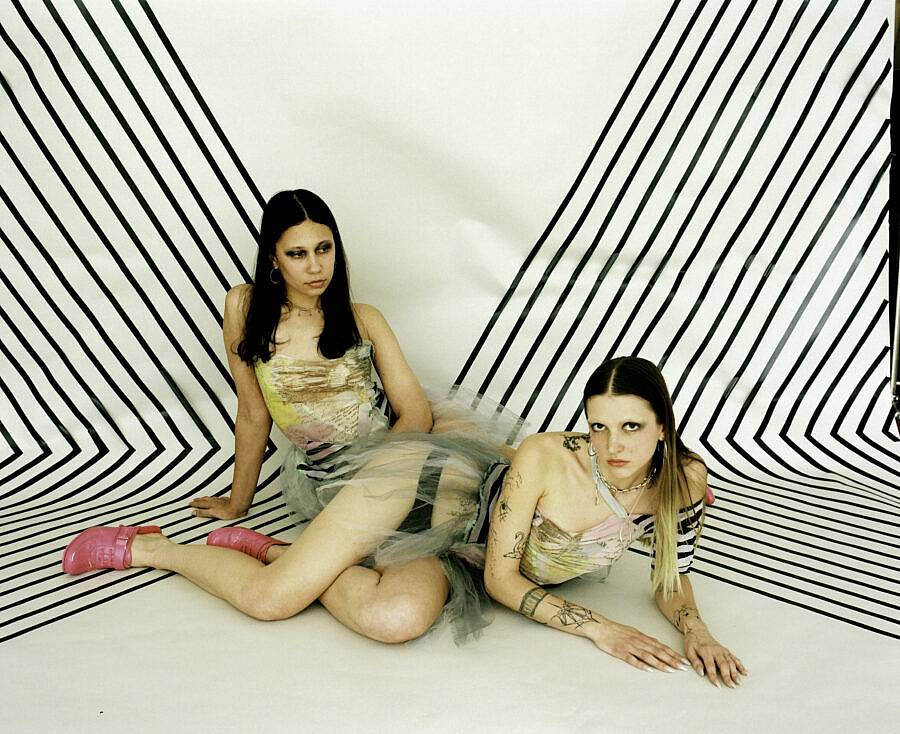
What are some recent, upcoming or current projects you are working on?
I have been preparing several portfolios. Due to the form of my work, I am not orienting myself toward a traditional gallery setting and would like to establish a practice where I could convey the idea of a runway show or larger collection to someone that might help me organize or fund it.
What is one of the bigger challenges you and/or other designers are struggling with these days and how do you see it developing?
I struggle a lot with marketing and social media. In my perfect world I wouldn’t need to have a presence online to be doing the things I’m doing, however the internet has provided me a lot of opportunities. It’s very much a double edged sword. Trying to navigate exposure and internet trends but also staying true to who I am as a person. I am very anti-trend, and keeping up with internet culture, but that comes with its setbacks. Conforming to what is happening currently on social media is beneficial in so many ways in terms of production and selling but it loses the care and attention slow fashion creates. I struggle a lot with wanting to produce at a rapid rate but also wanting to create garments that are meaningful and long lasting. High quality design takes time and I think people frequently forget that when the speed of the internet is instant.
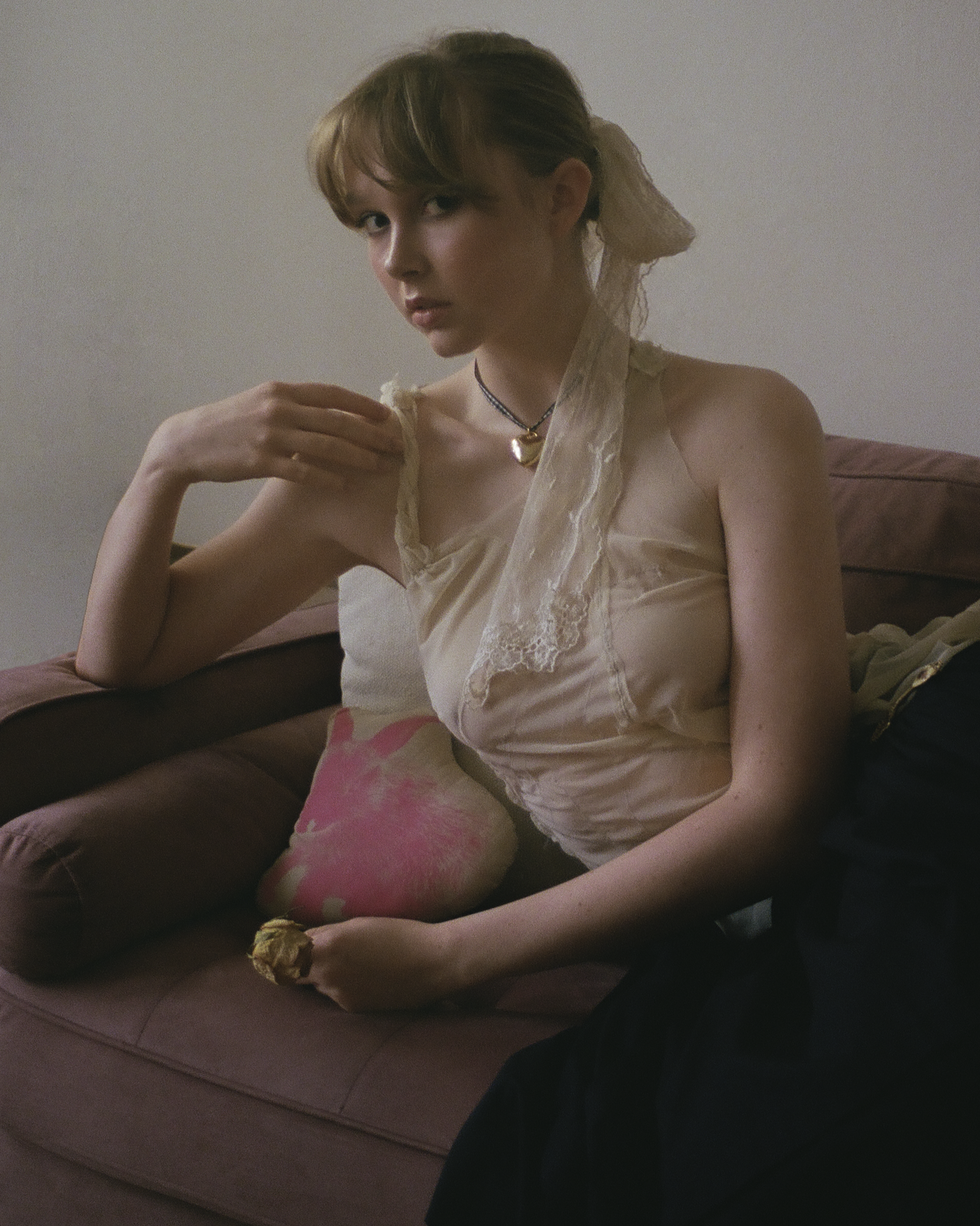
How did your interest in art or design begin?
My parents got me my first camera when I was three. It was something I grew up doing and it always felt very natural to me. My grandma is a quilter and I would spend the summers with her growing up. During that time she taught me how to sew. From there, I would cut up all of my dolls’ clothing and turn them into pieces of clothing I actually enjoyed. I feel like I have always been drawn to the idea of aesthetics and expressions since I was a child. I can’t exactly pinpoint a moment where I was like I want to make art, I feel like the process of it has always been a part of who I am and how I digest the world around me.
How has the transition from Portland to Chicago affected your design practice?
I’m honestly not sure how much that has affected me. Before I lived in Portland, I spent the majority of my life in the south between Arkansas and Kentucky. I feel like that had more of an impact on me than Portland did. A lot of my writing and imagery references rural America. In a way, that part of my life is very nostalgic to me. It has felt very blurry in my mind since I’ve gotten older. That blurriness provides a lot of room for creating a narrative and exploring memories that may or may not have existed.
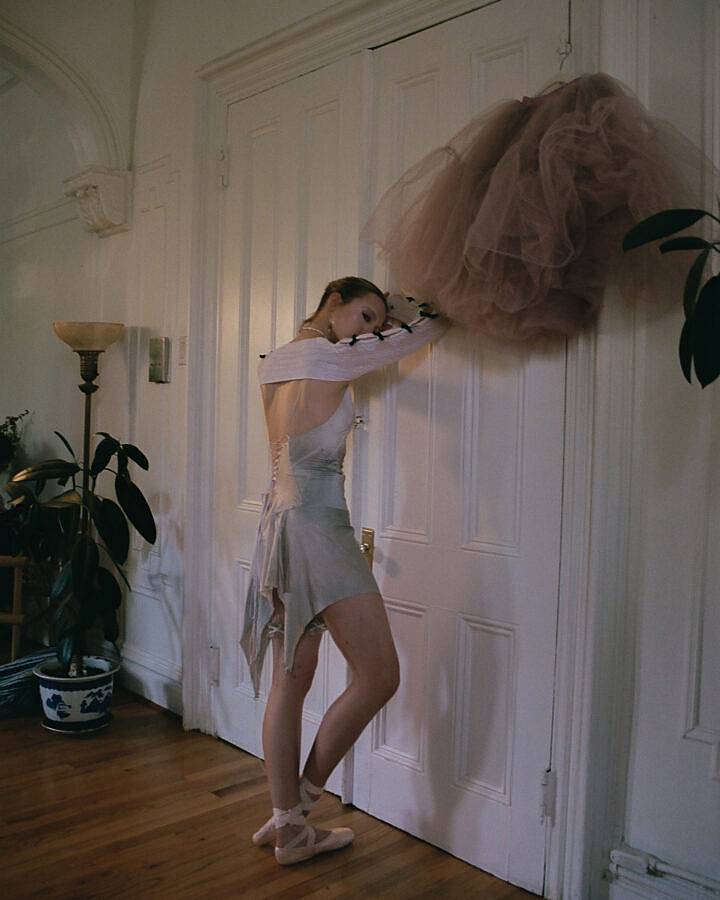
What products or companies are you interested in right now?
I have been looking at a lot of dinosaur skeletons, fossils, and harpoon guns on eBay. I’m really interested in the marketing and packaging of Nasomatto perfumes.
What materials do you use in your work and what is your process like?
This past year I have been incorporating more materials into my work such as leather, suede, and denim. I always find myself returning back to mesh and spandex. I love the tension of using athletic materials in a way that is anti their function. My process is very intuitive. Sometimes I will start with a drawing and then base the garment around the drawing. Other times I will develop the garment first and then add the images and text after the pattern. I don’t necessarily have a set way of making pieces. I find this helps keep me engaged and allows for experimentation. I lose interest when things become too repetitive and mundane. I am always trying to learn and develop new ways of working.

Are there any films or media that you find yourself coming back to a lot lately in some regard? How?
I have been really invested in horror lately. This fall I was binging Saw, The Collector, The Hills Have Eyes remakes alongside other 2000s horror genres. I really enjoy the grimy and grit aesthetic they portray. One movie I always return to is The Holy Mountain. I watched this movie for the first time when I was eighteen and it was so influential to the practice I have developed over the last seven years in art and in my personal life.
What artists or designers are you interested in right now?
The Kloz Horse Spring/Summer 2004 collection has been circulating in my mind a lot. I return frequently to a couple of the Imitation of Christ collections from the early 2000’s as well. In general, I have been looking at a lot of late 90s, early and mid 2000s runway shows.
Do you have a specific process when conceptualizing your photoshoots/how you decide to document your work?
It varies depending on who is photographing. Sometimes I will want specific things, but I leave a lot of creative control up to the photographer. Each person I shoot with has a different style and taste, and I want that to reflect in the photos being shot. I think it would be incredibly boring to have complete creative direction over every shoot. When shooting, I mainly focus on the styling of the work, and then I let the photographer do what they want. I think there’s a lot of room for experimentation and expansion of context when letting someone else take charge of the direction. Doing this allows my pieces to expand beyond the context of which I made them originally. I think it’s really refreshing to be able to view your work in a vision created by someone else’s mind.
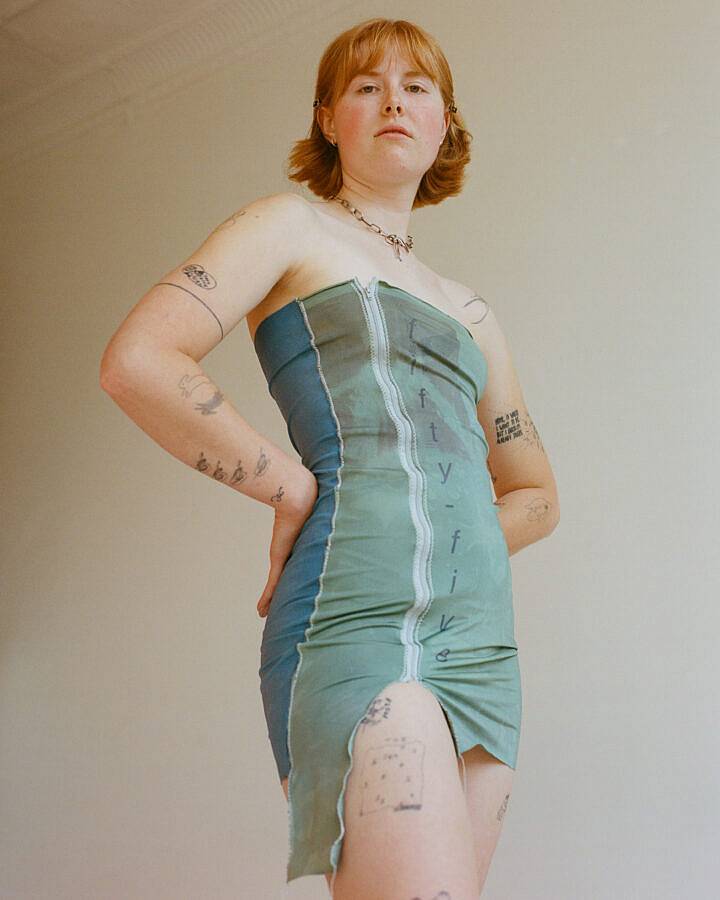
What was the last piece of art you saw that stuck out to you?
Recently I have been spending a lot of time on eBay looking at the documentation of products that are being sold. It’s not necessarily art but I am very interested in the advertisement of pieces between the display and quality of the image. My favorite “piece” I’ve seen recently was a listing for six deer antlers. They were photographed in a circle with the antlers spiraling out from the middle point where they all connected on top of a white tarp.
How do you find your practice in relation to different cultures of the art world? Is there one you feel more supported or understood by?
I think I’m still trying to find a place where my work belongs, but at the same time it is accepted in so many different ways by different people. I have recently been supplying to Enid, an independent concept store here in Chicago. I have designed things from wedding dresses to stage outfits for musicians. I frequently worry about not having a specific place or audience for what I’m making, but I am always pleasantly surprised by the opportunities I have received. I am making things I would wear, and things I would want to see more of, and I’m very grateful for the range of people who have interacted with the things I am designing.
What are you really excited about right now?
I just finished applying to grad schools and am planning to move in May. I’m not exactly sure what I am doing, but I am excited to figure out a new part of my life. I am looking forward to being in a new environment, meeting new people, and discovering new things. I have felt very stagnant this past year and am really excited to have the feeling of discomfort back in my life.

Do you consider collaboration an essential part of what you do?
Definitely. The clothing I make would not be able to live the life it does without the people who I work on projects with. I am very grateful to have close friends who are incredibly talented that I can work with. Sometimes when making a look, I start off with an idea and choose a model in advance and adjust my work to fit what I envision them being like in it. Other times, when planning shoots, I have an idea and so does the photographer and we work together on how to execute the look and shoot. I am a firm believer that working with the community you are a part of is very crucial to a practice. My practice is a reflection of the things I research but also the environment I exist in. A lot of the opportunities I have had are from the community I surround myself with. I am extremely grateful to be surrounded by people who are incredibly passionate, driven, and inclusive.
Can you share one of the best or worst reactions you have gotten as a result of your work?
The best compliment in regards to my work is when people tell me my pieces when worn make them feel the most comfortable in their body. Part of the reason I started making garments was because I couldn’t find things that truly reflected what I wanted to wear and felt comfortable in. Clothing, in my opinion, is the ultimate form of expression. The things you choose to wear are YOU, and there is such freedom in being able to produce garments that make people feel like themselves. I used to get a lot of backlash about my image choices that I print. People would frequently tell them it made them uncomfortable or described what I was doing as brutal. A lot of my practice has to do with the interaction of beauty and violence. Violent things may also appear as beautiful in many circumstances. I think a good example is when I was printing trail cam photos of animals being hunted and/or shot. The act of death can be considered violent, however, sometimes the image or the interaction with it can be incredibly ethereal when viewed in a certain light. I used to take people’s discomfort with what I was making as an insult, but now I think the effect of having someone sit with the reality of an image or text that evokes a strong sense of discomfort is one of the greatest things that I can accomplish.
Interview conducted and edited by Liam Owings
